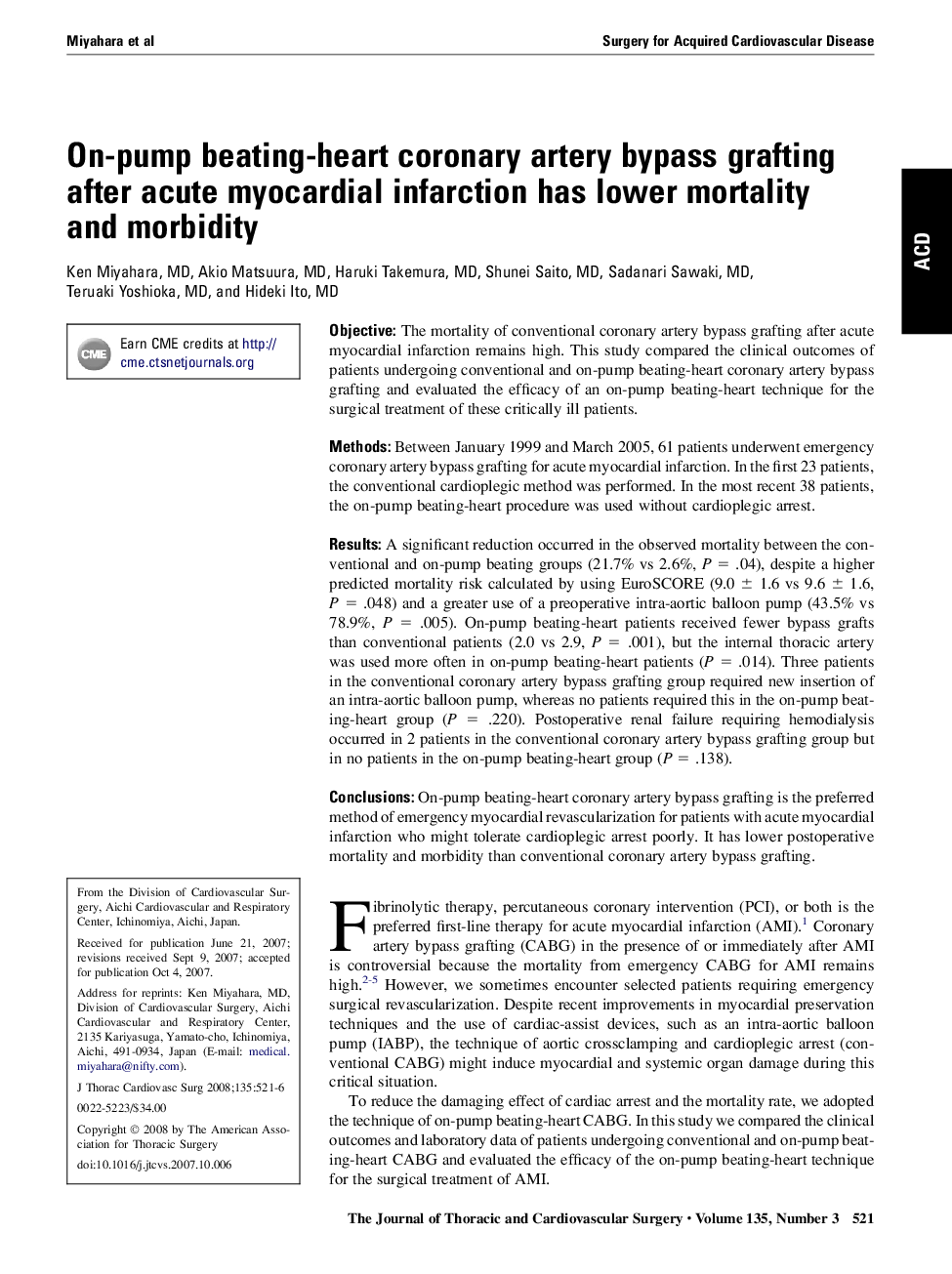| Article ID | Journal | Published Year | Pages | File Type |
|---|---|---|---|---|
| 2983532 | The Journal of Thoracic and Cardiovascular Surgery | 2008 | 6 Pages |
ObjectiveThe mortality of conventional coronary artery bypass grafting after acute myocardial infarction remains high. This study compared the clinical outcomes of patients undergoing conventional and on-pump beating-heart coronary artery bypass grafting and evaluated the efficacy of an on-pump beating-heart technique for the surgical treatment of these critically ill patients.MethodsBetween January 1999 and March 2005, 61 patients underwent emergency coronary artery bypass grafting for acute myocardial infarction. In the first 23 patients, the conventional cardioplegic method was performed. In the most recent 38 patients, the on-pump beating-heart procedure was used without cardioplegic arrest.ResultsA significant reduction occurred in the observed mortality between the conventional and on-pump beating groups (21.7% vs 2.6%, P = .04), despite a higher predicted mortality risk calculated by using EuroSCORE (9.0 ± 1.6 vs 9.6 ± 1.6, P = .048) and a greater use of a preoperative intra-aortic balloon pump (43.5% vs 78.9%, P = .005). On-pump beating-heart patients received fewer bypass grafts than conventional patients (2.0 vs 2.9, P = .001), but the internal thoracic artery was used more often in on-pump beating-heart patients (P = .014). Three patients in the conventional coronary artery bypass grafting group required new insertion of an intra-aortic balloon pump, whereas no patients required this in the on-pump beating-heart group (P = .220). Postoperative renal failure requiring hemodialysis occurred in 2 patients in the conventional coronary artery bypass grafting group but in no patients in the on-pump beating-heart group (P = .138).ConclusionsOn-pump beating-heart coronary artery bypass grafting is the preferred method of emergency myocardial revascularization for patients with acute myocardial infarction who might tolerate cardioplegic arrest poorly. It has lower postoperative mortality and morbidity than conventional coronary artery bypass grafting.
